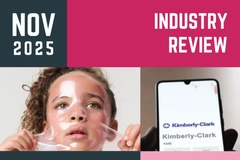Skin microbiome bacteria discovered as natural UV protection

A study has found that naturally occurring microbes in the skin may protect it from harmful UV radiation, which could pave the way to innovative sunscreen solutions. It discovered an interplay between the skin’s microbiome and natural UV protection and illustrates how the skin produces a response to solar radiation by harnessing bacteria.
Peter Wolf, co-author and researcher at the Unit for Photodermatology, Medical University of Graz, Austria, says: “These findings open the door to microbiome-aware sun protection, where we not only protect the skin from UV radiation, but also consider how resident microbes can alter the immune landscape after exposure.”
The study, published in the Journal of Investigative Dermatology, was conducted on mice. It highlights the millions of microorganisms, including bacteria, viruses, and fungi, that are hosted in the skin ecosystem and their role in UV protection.
“We were intrigued that certain microbes could be actively involved in or even interfere with UV effects. The overlap between microbial metabolism and host immunity became the focus of our investigation,” adds lead investigator VijayKumar Patra, researcher at the International Center for Infectiology Research (CIRI), Lyon, France, and for Photodermatology at the Medical University of Graz.
 The skin microbiome has a highly complex composition that varies depending on anatomical location.Microbiome’s ability
The skin microbiome has a highly complex composition that varies depending on anatomical location.Microbiome’s ability
The study reads that the findings provide a “striking example” of the skin microbiome’s ability to reshape host cell functions.
“This is the first time we have demonstrated a direct metabolic link between UV radiation, a host-derived molecule, and bacterial behavior that affects immune function,” says co-author of the study, Marc Vocanson, researcher at the CIRI.
The evidence has shown that certain bacteria, especially certain Hut (Histidine utilization) bacteria, metabolize a UVB mediator and therefore influence its concentration on the skin. The authors say this deprives organisms of a key mediator capable of regulating immune responses to environmental antigens.
Wolf says that in the future, topical treatments that modulate microbial metabolism could minimize, maintain, or enhance UV-induced immunosuppression when clinically beneficial, such as with phototherapy.
Breaking down the biome
The skin microbiome has a highly complex composition that varies depending on anatomical location.
 The study reads that the findings provide an example of the skin microbiome’s ability to reshape host cell functions.The Indigenous skin microbiota, called normal or commensal microbes, live in neutral or beneficial relationships with one another. They adapt their metabolism to the microenvironment and resources available, such as feeding on the nutrients in the skin, producing molecules that affect the environment, and interacting with cells.
The study reads that the findings provide an example of the skin microbiome’s ability to reshape host cell functions.The Indigenous skin microbiota, called normal or commensal microbes, live in neutral or beneficial relationships with one another. They adapt their metabolism to the microenvironment and resources available, such as feeding on the nutrients in the skin, producing molecules that affect the environment, and interacting with cells.
“To date, many internal and external factors have been identified that influence the composition of the skin microbiome These include various individual parameters such as race, gender, age, hormone levels, diet, and hygiene, but environmental factors and the effects of occupation, pollution, and climate also significantly influence,” says Patra.
He further explains that UV radiation modulates immune responses directed against environmental antigens on the skin’s surface. The study adds that the skin microbiome also plays a role in regulating these responses.
Understanding the skin barrier
Personal Care Insights recently reported on the increasing industry trend of products made to enhance the skin’s microbiome.
“As interest grows in microbiome research and personalized medicine, understanding these microbe-host interactions could reshape how we think about sun protection, immune diseases, skin cancer, or even treatments like phototherapy,” says Vocanson.
Anna Di Nardo, researcher at the University of California San Diego, and San Gallicano Dermatological Institute in Rome, Italy, comments that this newly uncovered role of microbial metabolism in modulating UV tolerance is reshaping the understanding of the skin barrier.
“Not just as a structural shield but as a metabolically active, microbially regulated interface. With increasing concerns about UV exposure, skin aging, and cancer, a deeper understanding of this axis offers promising avenues for therapy and prevention,” says Di Nardo.













